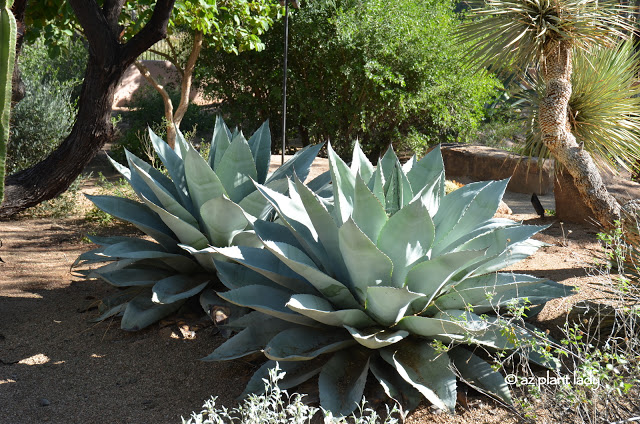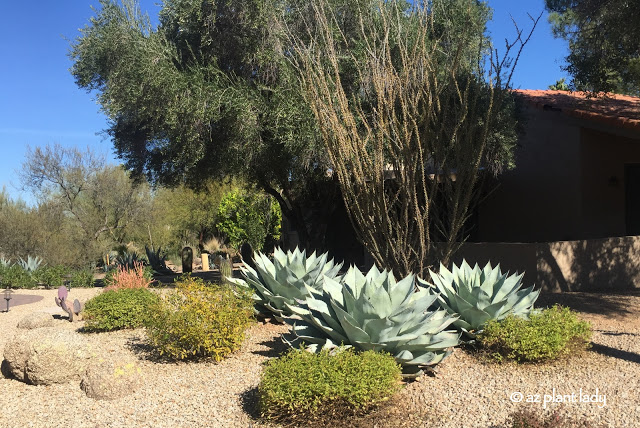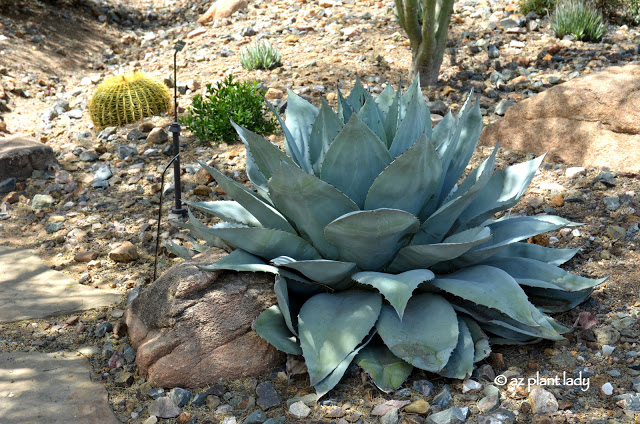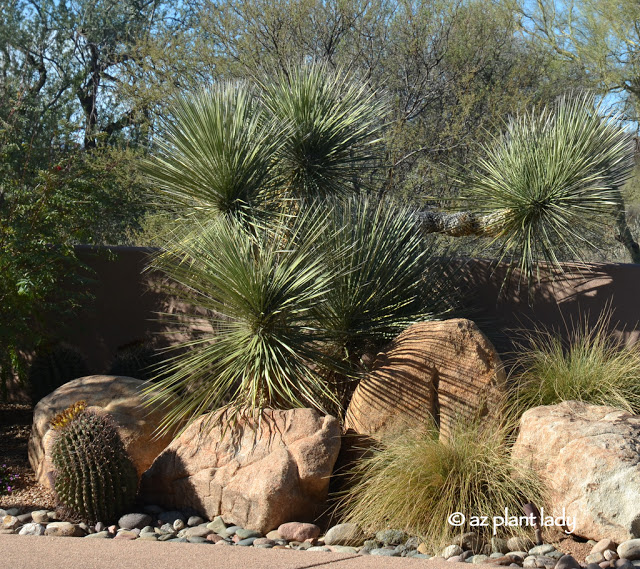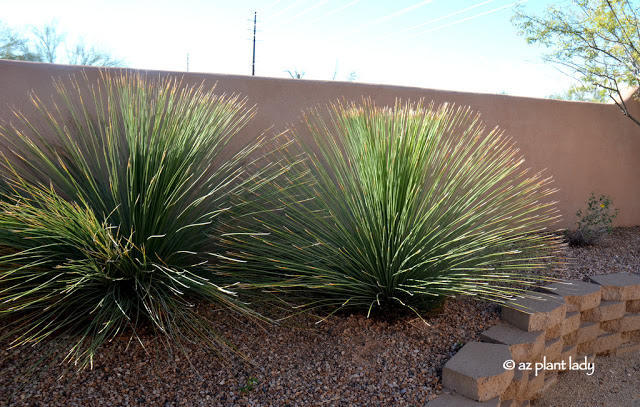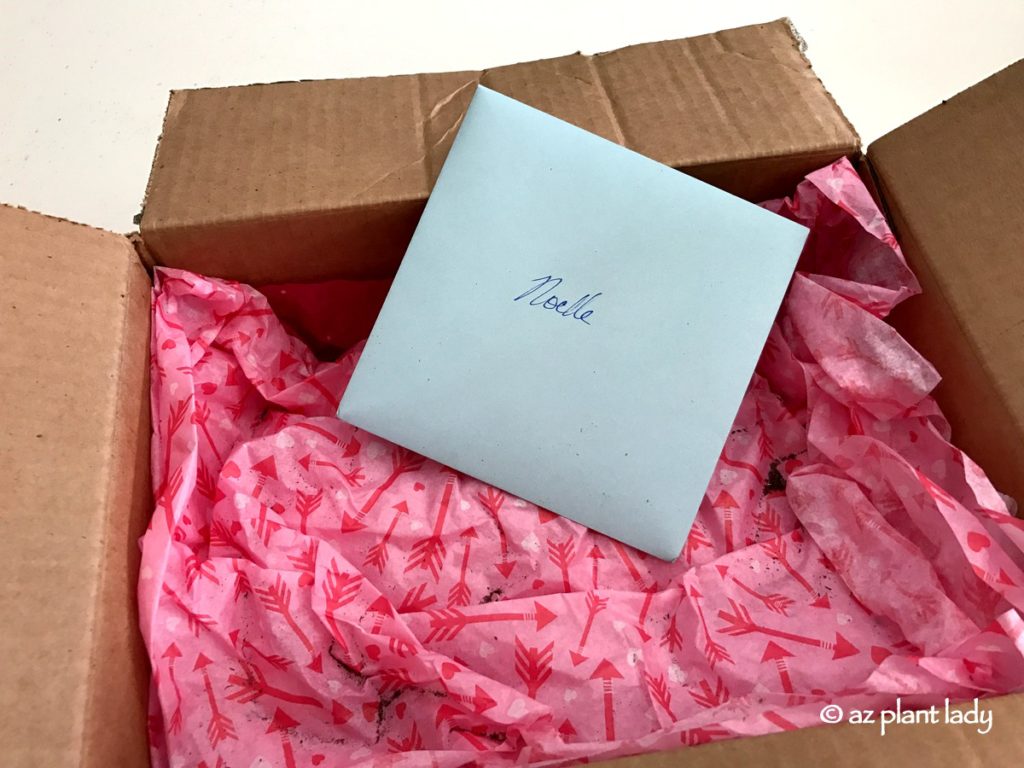
The appearance of a package in my mailbox always brightens my day. Sometimes, it is the latest garden product that a company wants me to try out, or new plants to try out in my garden. But, this small box contained three small items that I had long been waiting for.
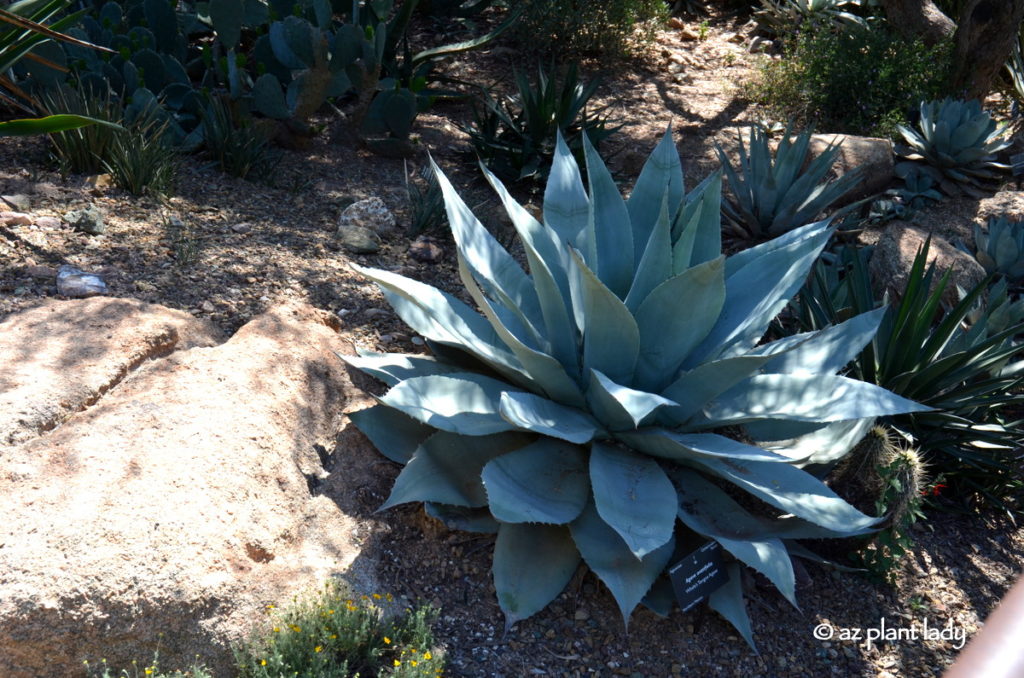
Whale’s Tongue Agave (Agave ovatifolia)
For those of you who have followed my blog for awhile, you know that agave are my favorite type of succulent. I love the beauty of their fleshy leaves arranged in rosette patterns with their pointy tips and finely toothed edges.
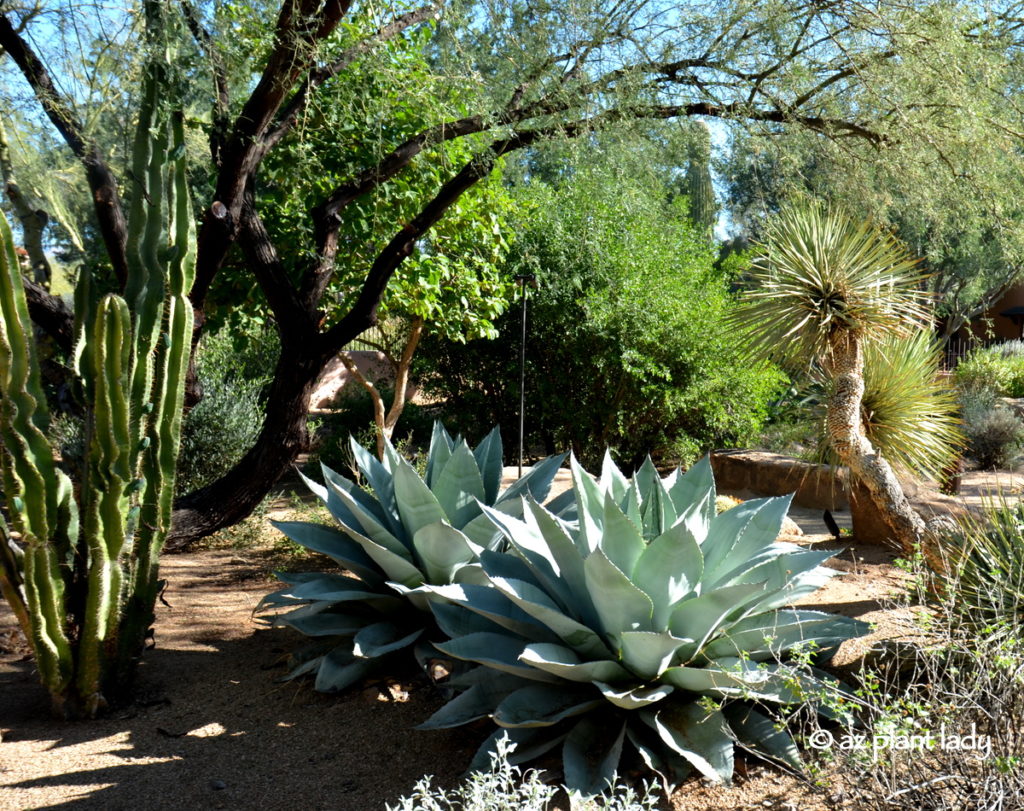
Two Whale’s Tongue Agave (Agave ovatifolia)
My friend and fellow blogger, Pam Penick, also knows how much I love agave. So, when her whale’s tongue agave (named ‘Moby’, after the book Moby Dick) flowered earlier this year in her Austin, Texas garden, she kindly gifted me with three of Moby’s offspring.
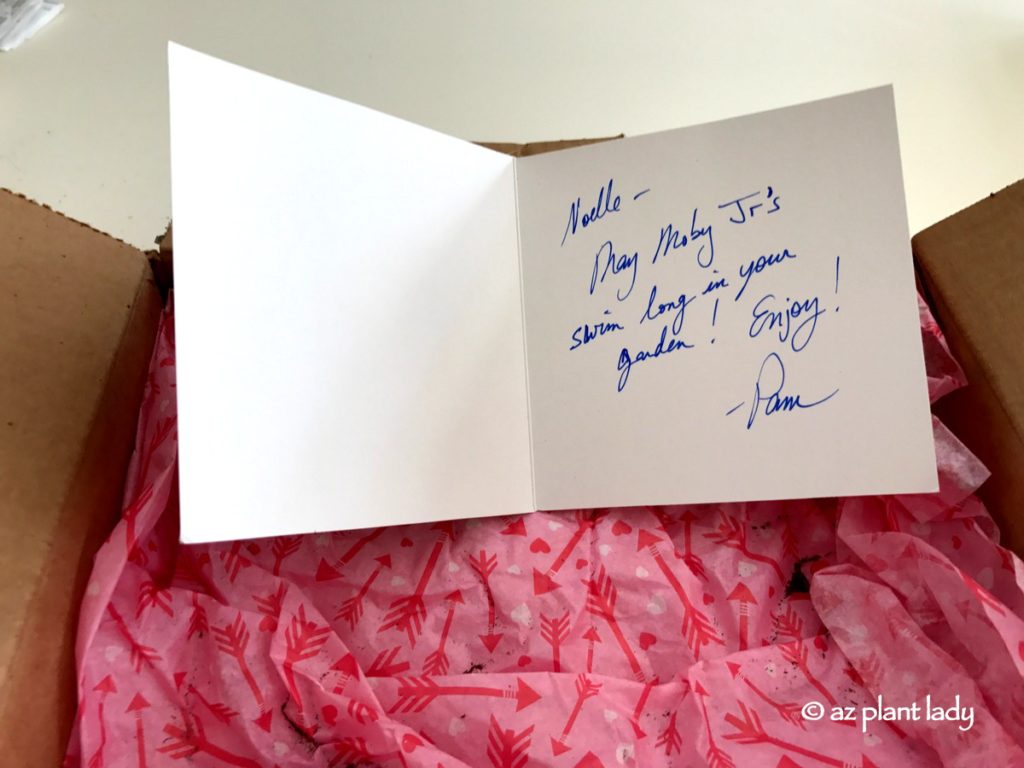
The three baby agave, which arrived a week ago, came from an agave that is well known throughout the garden blogger community. Pam’s agave was the focal point of her backyard and appeared in many of her blog posts.
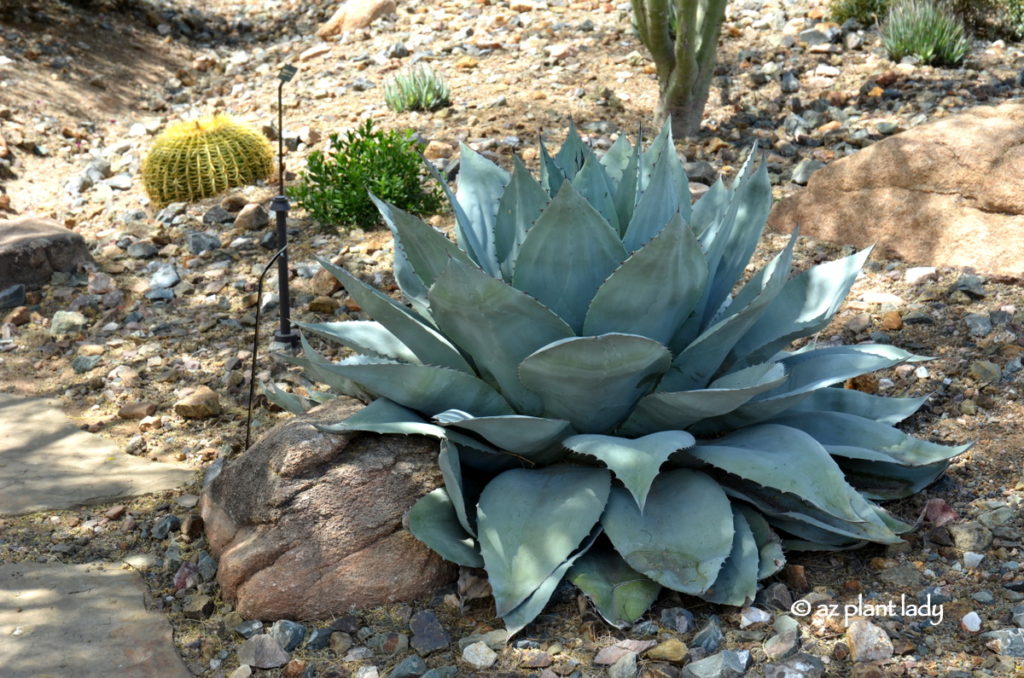
I must admit that I fell in love with whale’s tongue agave after seeing ‘Moby’. The leaves of this agave has a unique shape with a concave dip that makes the leaves resemble the tongue of a whale. I would often stop and take pictures whenever I saw one while working and began to incorporate into my landscape designs.
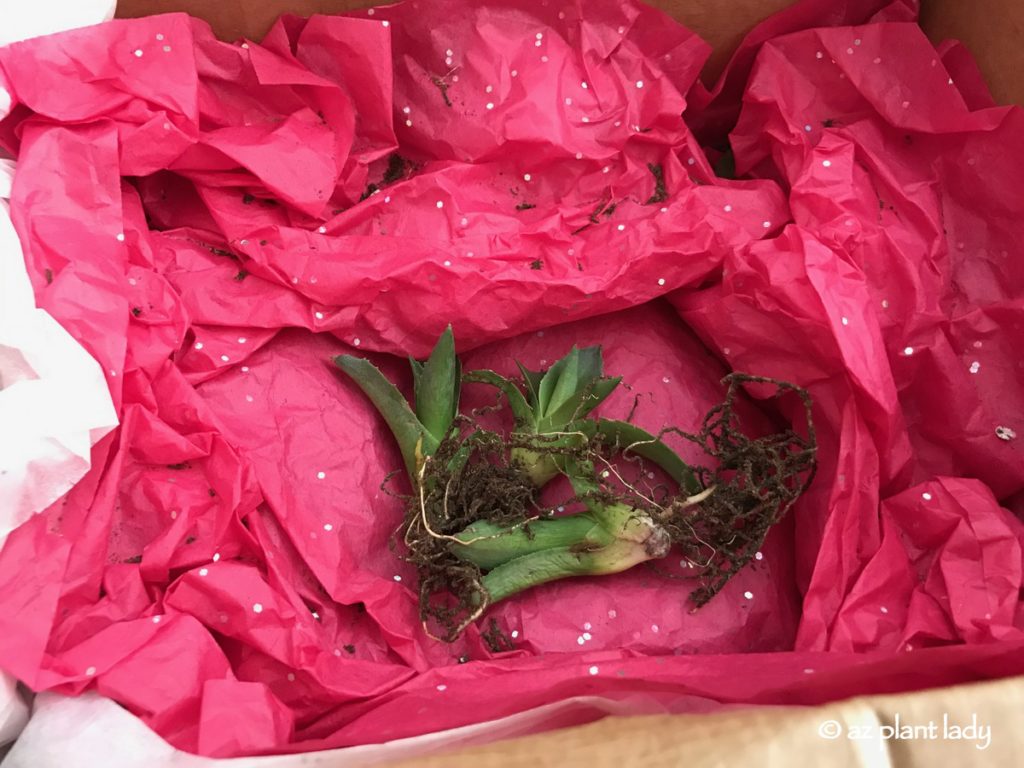
Three ‘Moby’ Juniors
Pam began to chronicle the beginning of the end of Moby’s life as it began to flower and at the end, she harvested the tiny bulbils (agave babies) from the flowering stalk.
I was so honored when she emailed me to tell me that she had reserved three little ‘Moby Juniors’ for me. I’ve been anxiously awaiting their arrival and now they are finally here!
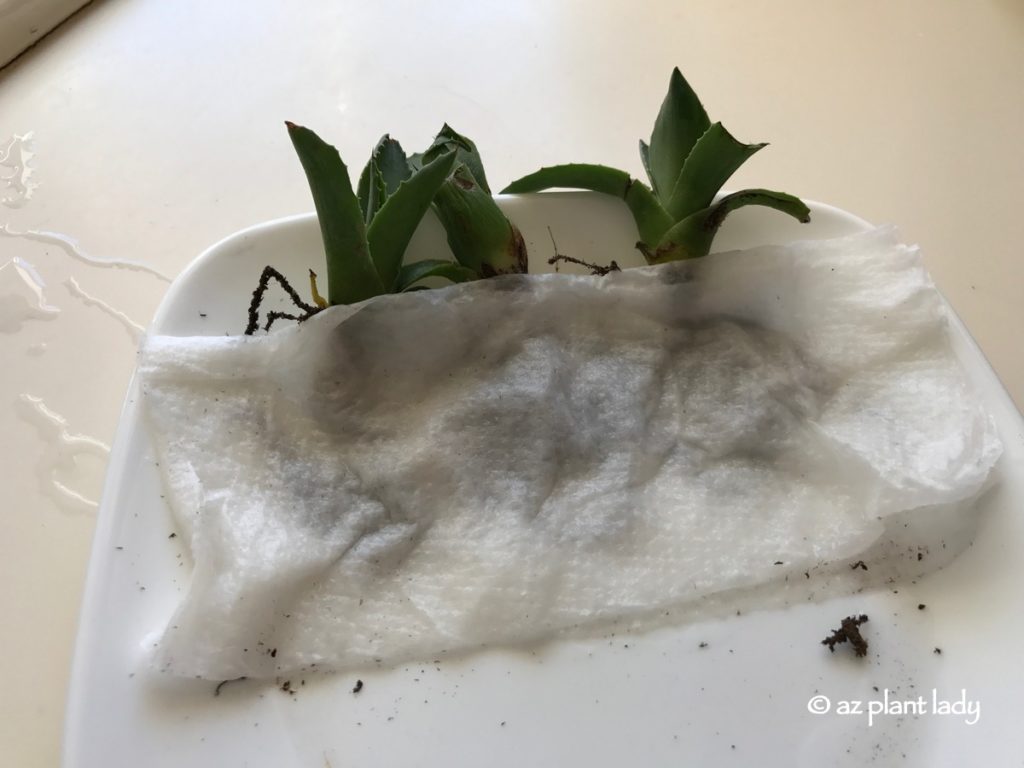
Right now, they are re-hydrating for a day or two until I get organized and get them planted. I have a few spots in mind for them in the garden. While they can grow in full sun in Texas, whale’s tongue agave does best in filtered shade or morning sun in Arizona gardens. I’ll probably plant them underneath the shade of my palo verde trees.
I am so grateful for this special gift of agave and look forward to seeing the beauty of three Moby Juniors grace my Arizona garden.
Beautiful Agave: How to Grow and Use It In Your Landscape


